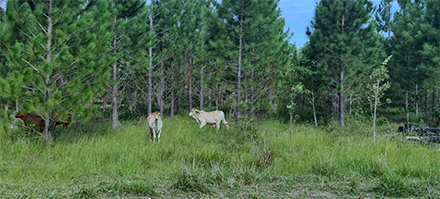A series of information initiatives aimed at advising potential farmers and landowners in South Australia interested in the on-farm forest plantation sector is now available as part of Trees on Farm initiative. Source: Timberbiz
This includes a toolkit, developed by the South Australian Government, in tandem with the Green Triangle Forest Industries Hub (GTFIH), featuring expert information and printable fact sheets to support and guide landholders in their commercial plantation investment.
In addition to the toolkit, other information for perspective growers is also available from five research reports and associated seminar videos conducted under the Trees on Farm initiative from both the PIRSA and GTFIH websites. The research projects, focussed on short rotation silviculture, include topics such as:
- Development of rotation silviculture – which explored current and alternative Tasmanian bluegum (hardwood) and radiata pine (softwood) management (silviculture) regimes. By considering expected time frames for harvest, the farm property plan, and intended markets, there is potential to match a range of forest management regimes to an individual farmer’s property and production system.
- Enhancing commercial viability via logistics and processes – includes a snapshot of Green Triangle softwood processors and hardwood woodchip exporters, tables of indicative softwood and hardwood harvest yields, indicative harvesting and haulage costs, approximate roading costs, and typical mill door prices.
- Barriers to harvesting and processing of small private plantation (SPP) resources are identified and discussed in the report, including plantation location relative to markets, plantation scale, log sale process, and harvesting contractor availability.
- Spatial analysis of suitable land areas for trees into farming – Four plantation management regimes are modelled using the Agricultural Production Systems Simulator (APSIM), and likely forest wood harvest volumes generated at thinning and final harvest across the project area are shown on the map.
- The map also shows the total Australian Carbon Credit Units (ACCUs) that could be available under the Tasmanian bluegum and radiata pine regimes, as well as ACCUs that could be available under a permanent environmental planting.
- Comparison of the Emissions Reduction Fund methods – primarily compared the ACCU Scheme plantation forestry method (Schedule 1), which focuses on new plantation forests for commercial harvest, with the farm forestry method, which incorporates both harvest plantation projects for saleable forest products and permanent planting projects. Among the conclusions, the analysis suggests the plantation forestry method is likely to be a better option if a plantation is established for harvesting wood products.
- Development of taxation treatment in a farming framework – provides a distilled account of trees, taxation and superannuation and comprehensive appendices with information sourced from the Australian Taxation Office (ATO) and other sources. The analysis does not seek to provide specific treatment and outcomes but rather demonstrate what may be possible subject to a range of considerations.
- Combining the technical nature of taxation with a need for clear examples, the report makes use of case studies to demonstrate principles and concepts with a caveat that any specific implementation will need to seek specific and current professional advice.
- The GTFIH website also includes an interactive web map that allows users to explore the estimates of saleable wood and carbon credits, in agricultural areas within South Australia and western Victoria.
The two year, $650,000 Trees on Farm initiative, jointly funded by the Australian and South Australian Governments, is aimed at boosting the growth and development of the on-farm forest plantation sector, particularly in the Green Triangle region.
For further information on the Trees on Farm initiative including the toolkit, research reports and videos and interactive map visit www.pir.sa.gov.au/trees-on-farms and www.gtfih.com.au/trees-on-farms






